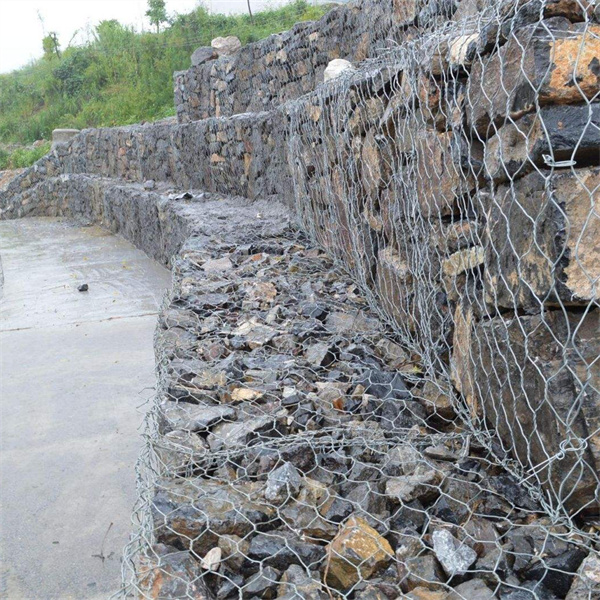Νοέ . 11, 2024 05:43 Back to list
Causes and Solutions for Gabion Wall Failures by Leading Manufacturers
Understanding Gabion Wall Failures and the Role of Manufacturers
Gabion walls, composed of stone-filled wire mesh baskets, serve as an effective solution for various civil engineering applications, including retaining walls, flood control, and erosion protection. However, like any structure, gabion walls can fail, which prompts inquiries into the reasons behind such failures and the responsibilities of manufacturers in ensuring structural integrity and longevity.
Common Causes of Gabion Wall Failures
Gabion wall failures can occur due to several reasons, often stemming from inadequate design, poor construction practices, or unforeseen environmental conditions
. Understanding these causes is crucial for manufacturers and engineers alike.1. Poor Design Gabion walls must be designed according to the specific conditions they face. Factors such as soil characteristics, water flow dynamics, and load considerations must all be taken into account. A poorly designed gabion wall that does not align with these factors might lead to excessive pressure on the wire mesh, resulting in deformation or collapse.
2. Improper Installation The construction process is equally important. If gabion baskets are not filled correctly—whether with insufficient material, poorly graded stone, or a lack of compaction—the structure may suffer from instability. Furthermore, improper placement of the baskets or failure to secure them against sliding or overturning can lead to sudden structural failures.
3. Erosion and Soil Movement Natural elements such as water flow can undermine gabion walls, especially if proper drainage measures are not implemented. Erosion of soil behind or underneath the wall can cause significant shifts and eventually lead to failure. Regular monitoring and maintenance are essential to combat these erosion issues.
4. Environmental Stressors Extreme weather conditions, such as heavy rainfall or floods, can exert unexpected stresses on gabion walls. Manufacturers must account for local climatic conditions in their designs. Moreover, seasonal changes that affect soil moisture content can lead to expansion and contraction, placing additional strain on the wall structure.
gabion wall failure manufacturers

The Role of Manufacturers
Manufacturers of gabion walls play a crucial role in ensuring that these structures perform as intended. Their responsibilities include
1. Quality Materials Manufacturers must source high-quality materials that resist corrosion, mechanical stress, and adverse environmental conditions. The wire mesh must meet specific standards in terms of tensile strength and durability. Additionally, the stone used in the baskets should be properly sized and graded to ensure stability when packed.
2. Design Guidelines Providing comprehensive design guidelines is essential for manufacturers. These guidelines should cover various installation scenarios, addressing regional geological and hydrological conditions. Collaborating with civil engineers during the design phase can help create solutions tailored to specific site requirements.
3. Training and Support Offering training programs for construction crews is critical. Manufacturers should provide resources that educate workers on proper installation techniques, the importance of drainage, and regular maintenance routines. Enhanced knowledge can significantly reduce the risk of failures caused by human error.
4. Post-Installation Monitoring Establishing a framework for post-installation monitoring can help track the performance of gabion walls over time. Manufacturers can play a role by offering maintenance services or tools that allow for easy inspection of the structures, identifying potential failures before they become catastrophic.
Conclusion
As gabion walls continue to gain popularity in engineering and landscape architecture, understanding the factors that lead to their failure and the responsibilities of manufacturers is vital. By ensuring high-quality materials, effective design guidelines, and proper training for installation, manufacturers can contribute significantly to the longevity and effectiveness of gabion structures. Through collaboration and innovation, the industry can address existing challenges and enhance the performance of gabion walls, safeguarding against potential failures and ensuring their efficacy in mitigating environmental impacts.
-
Visualizing Gabion 3D Integration in Urban Landscapes with Rendering
NewsJul.23,2025
-
The Design and Sustainability of Gabion Wire Mesh Panels
NewsJul.23,2025
-
The Acoustic Performance of Gabion Sound Barriers in Urban Environments
NewsJul.23,2025
-
Mastering the Installation of Galvanized Gabion Structures
NewsJul.23,2025
-
Gabion Boxes: Pioneering Sustainable Infrastructure Across the Globe
NewsJul.23,2025
-
Custom PVC Coated Gabion Boxes for Aesthetic Excellence
NewsJul.23,2025
-
Installation Tips for Gabion Wire Baskets in Erosion Control Projects
NewsJul.21,2025






